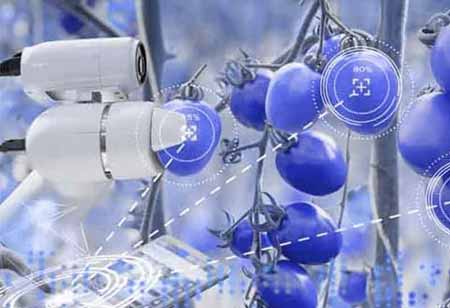Thank you for Subscribing to Agri Business Review Weekly Brief
How Vertical Farming Plays a Significant Role in the Future of Global Food Production
It is now possible to produce enormous quantities of food of a uniform quality using breakthrough vertical farming techniques.

By
Agri Business Review | Friday, April 29, 2022
Stay ahead of the industry with exclusive feature stories on the top companies, expert insights and the latest news delivered straight to your inbox. Subscribe today.
Vertical farming reduces transit costs. Compared to traditional farming, water is used at a minimum of 70 percent to 95 percent. Vertical farming eliminates pests and other diseases, as this method uses 90 percent or less soil.
FREMONT, CA: It is now possible to produce enormous quantities of food of a uniform quality using breakthrough vertical farming techniques. However, are there sufficient advantages to indoor farming to make it the future of modern agriculture?
Reliable year-round crop production
The primary advantage of vertical farming is that it is not weather-dependent. You may achieve year-round crop production without worrying about unfavorable weather conditions on the quality and profile of production and yield.
Growing in a protected, well-monitored, and regulated environment provides producers with confidence and peace of mind by enabling repeatable, programmable production.
By removing the impacts of mother nature, there is no such thing as a seasonal crop, and growers will avoid losses associated with attempting to extend the production windows associated with seasonal cropping.
Additionally, they can successfully shorten harvest times and increase volume without sacrificing flavor or quality, which stay constant. Indeed, when planned and appropriately handled, an indoor vertical growing system has consistently demonstrated increased flavor and shelf life.
This enables commercial producers to commit to their clients' delivery timetables and offtake agreements.
Unaffected by adverse weather conditions
Growing in a wholly contained and climate-controlled setting eliminates any reliance on—and concern about—the weather.
Whereas crops grown in a field can be destroyed by severe rain, wind, drought, or bugs, vertical farming ensures a specific yield.
More efficient use of space
Traditional farms, of course, require fertile arable land. On the other hand, vertical farms can be designed and constructed in any region or location, regardless of weather conditions or temperature extremes.
Additionally, because their stacking growth systems allow for vertical expansion, they can achieve higher production on a short land area.
Depending on the crop planted, one acre of vertical farming might continuously provide the equivalent of between 10 and 20 soil-based acres.
Minimize water consumption
One of the primary advantages of vertical farming is that the hydroponic growing process consumes approximately 10 percent less water and, as a result, fertilizers and fertilizers than traditional methods. Since the water is clean after use, it may also be recycled and reused, lowering expenses and minimizing waste.





